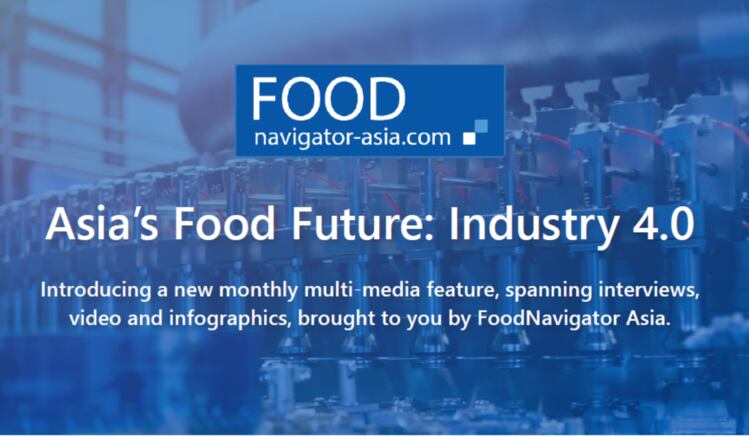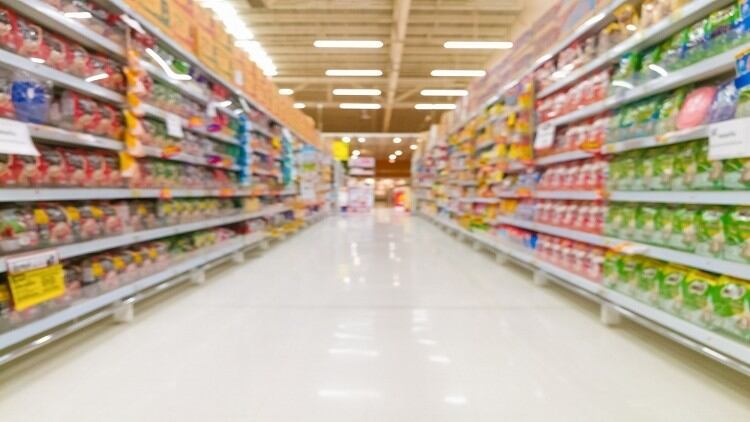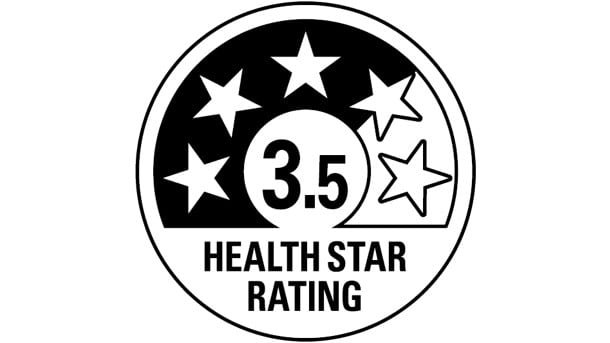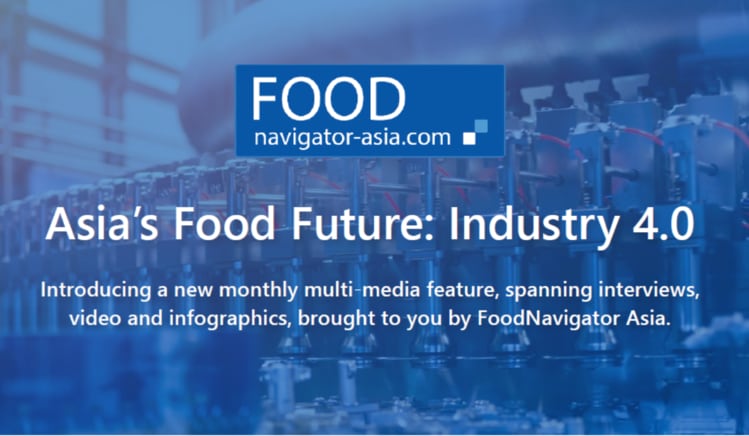Data from market research agency Markets and Markets revealed that the global food safety testing market (which covers both tools and technology) was worth some US$17bn in 2018, and is expected to grow at a CAGR of 7.7% to hit US$24bn by 2023.
“This growth will be driven by an increased need for testing, more demand for packaged foods, globalisation in food trade, an increase in foodborne disease outbreaks and more contamination incidents,” said the report.
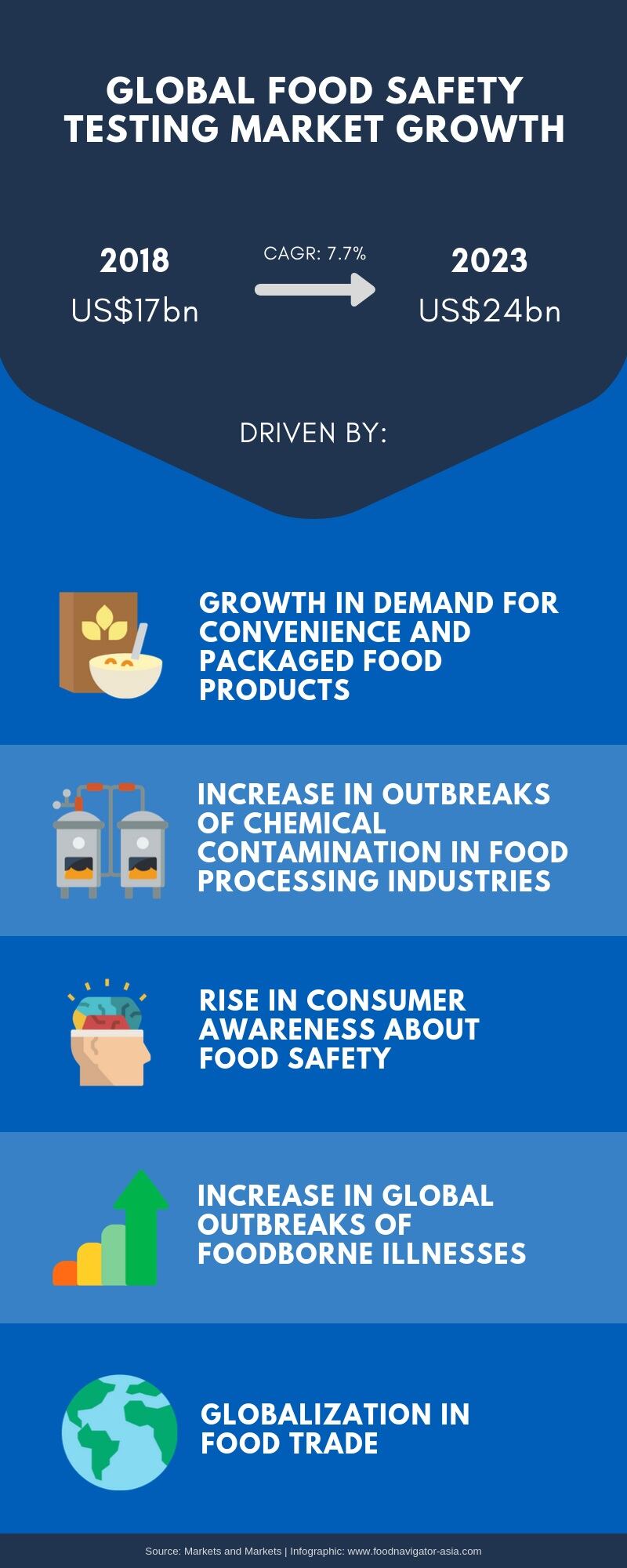
Technology is one of the World Health Organisation’s major priorities when it comes to addressing food safety, and these are expected to deliver ‘significant impact’ by 2030 if properly scaled.
According to food and nutrition consultant Dr Tan Sze Sze, food safety is in itself a scientific discipline, and covers ‘the various approaches to handle, prepare and store food in a way to prevent, reduce or eliminate the risk of food borne illnesses’.
“Based on my experience working with Asian food regulators and manufacturers, the [most] serious food safety issues are faced by the meat and seafood sector as well as the prepackaged food sector,” Dr Tan told FoodNavigator-Asia.
“The rise in demand of meat, fish and seafood in Asia has [led to] the excessive use of veterinary drugs, growth hormone, antibiotics and even illegal chemicals in the final products.
“These food safety issues are further aggravated by the lack of cold chain, food safety experts and testing infrastructure in many Asian countries, leading to the use of hazardous chemicals such as formalin to prolong the shelf life of fishery products.”
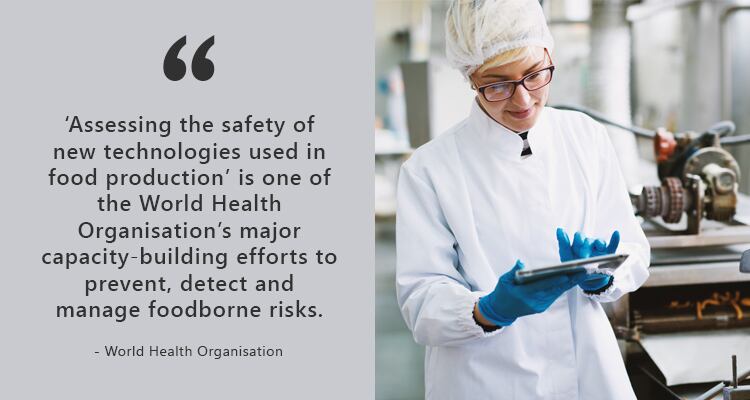
As for food additives, she said that these are widely applied by food manufacturing and food service industries, and more and more new and novel types are ‘introduced to the market each day’.
“[The] long term health effect of these food new additives are yet to be determined, [and] many users do not realise that [their usage] must be carefully controlled to ensure consumers’ health is not jeopardized,” she said.
As a result of the rising affluence in Asian society, the consumption of prepacked foods and dining out have also increased, which Dr Tan added would ‘directly increase the amount and types of food additives’ consumed.
Food safety tools and technology
There are a variety of tools in the market today that cater specifically to food safety applications, from on-pack indicators for temperature and gas detection, to point-of-care devices that detect actual contamination.
A popular type of point-of-care device is the scanner and its related technologies, which are particularly important in the primary production of food.
One example of such a scanning technology is New Zealand-based company Veritide, which specialises in optical scanning techniques to pick up bacterial and faecal contamination, particularly in meat.
“Traditionally, contamination detection was performed visually by inspectors, but the problem with that, especially considering the speed at which production takes place these days, is that it is very difficult to actually see and spot contamination,” Veritide Executive Director Gerard Kilpatrick told FoodNavigator-Asia.
“Our handheld scanner is based on technology that allows us to pick up chlorophyll from faecal matter - as the meat is scanned with the fluorescent light, the scanner will react by vibrating and lighting up to indicate the detection of chlorophyll and alert the user of possible contamination.
“This applies for both visible and invisible contamination – during the processing of meat, a lot of water is used for cleaning, and quite often a lot of the contamination has been watered down and diluted and cannot be seen by the inspector, but our scanner can still pick this up.”
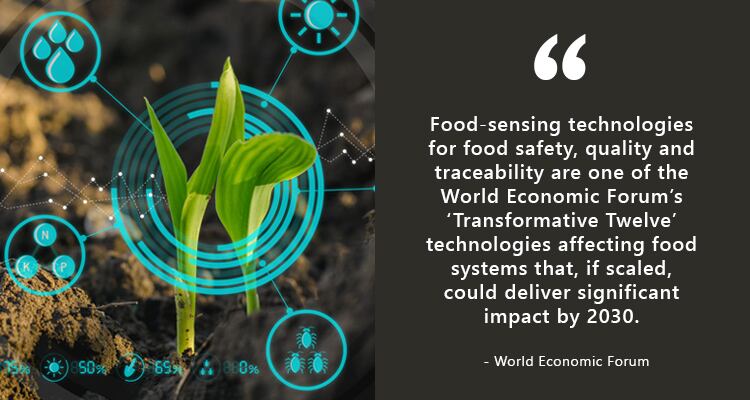
Kilpatrick added that the major benefits of such a technology are most prominent when it comes to the cost and time saved.
“In many places, either a lot of water or an acid wash is used, or the meat is put through a blast furnace to try and remove contamination – this is very expensive and time-consuming,” he said.
“With this technology, you get an instant result and there is no longer any need to wait many hours for swab results to come back from the lab as to whether or not there is contamination. You know the results at line speed on the spot.”
Particularly for the Asia Pacific region, Veritide is also looking to further develop their technology to apply to pork and poultry in addition to the current beef and sheep meat, as these two meat sources are ‘very substantial’ to the region.
“There’s not a lot of chlorophyll in the pork and poultry diets, as they don’t need much [green] plant-based foods, but we’re working on a solution for this, and hoping to have a solution within six months or so,” said Kilpatrick.
Watch the video below to find out more about the Veritide tool:
The importance of authenticity for safety
In addition to tools and technology specifically configured for food safety purposes, other types of technology that can bring proof of authenticity, such as traceability and platforms/databases carrying comprehensive information, are also gaining in importance within the food safety area.
“Authenticity is a key topic [of discussion] in Asia when it comes to alcohol and is frequently in the news, for example earlier this year when more than 10 people died due to the consumption of [fake] alcohol,” beverage technology (BevTech) company Omniaz CEO and Founder Lukasz Piotrowski told us.
Omniaz has developed an alcoholic beverage platform termed DRNK, which not only provides both B2B and B2C users with information covering some 500,000 alcoholic brands within their database, but also looks to provide confidence in the products’ authenticity.
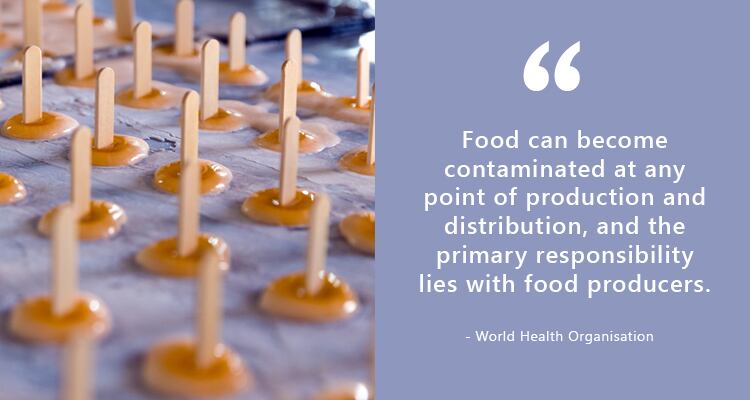
“Alcohol definitely is an area where there needs to be more focus, more protection and more custom-made solutions to [curb safety concerns] for consumers such that they do not worry about waking up the next day after consumption and needing to go to the emergency room,” he said.
“DRNK wants to provide a comprehensive solution, [including] a means of authenticating the bottles, bring a certain level of security for consumers, as well as give the producers a level of guarantee so they can protect their brand.”
Watch the video below to find out more about the DRNK app and its applications for food safety and authenticity:
Asia’s major food safety challenges
For food manufacturers in Asia, varying regulatory challenges also need to be closely considered when making any changes for food safety, which can in itself be a major challenge, according to Thermo Fisher Scientific Asia Pacific Vice President Commercial Operations, Chromatography & Mass Spectrometry Ian Smith.
“Domestic regulations such as China’s GB standards can be different from international standards such as the European Union’s General Food Law Regulation or the United States’ Food and Drug Administration (FDA) rules and regulations,” he told us.
In addition, there are various external factors that also need to be tackled including the environment, authenticity and integrity, which he described as ‘inextricably interlinked in a lot of ways’.
“For example, at the agricultural level, although pesticides are used to protect the world's crops, their presence beyond pre-defined safety limits could pose health risks to consumers and must be closely monitored,” he said.
“Governments in Asia are taking pesticides seriously. Take China for instance, the Ministry of Agriculture and Rural Affairs (MoARA) is striving to develop more maximum residue limits (MRL) for pesticides in food as well as testing methods.”
As a result of this, Thermo Fisher is emphasising technological solutions surrounding informatics e.g. its Lab Information Management Systems (LIMS); and enterprise solutions e.g. the Thermo Scientific Chromeleon Chromatography Data System
“These work to ensure traceability as well as to store, manage and access the vast amounts of data associated with food safety testing,” he said.
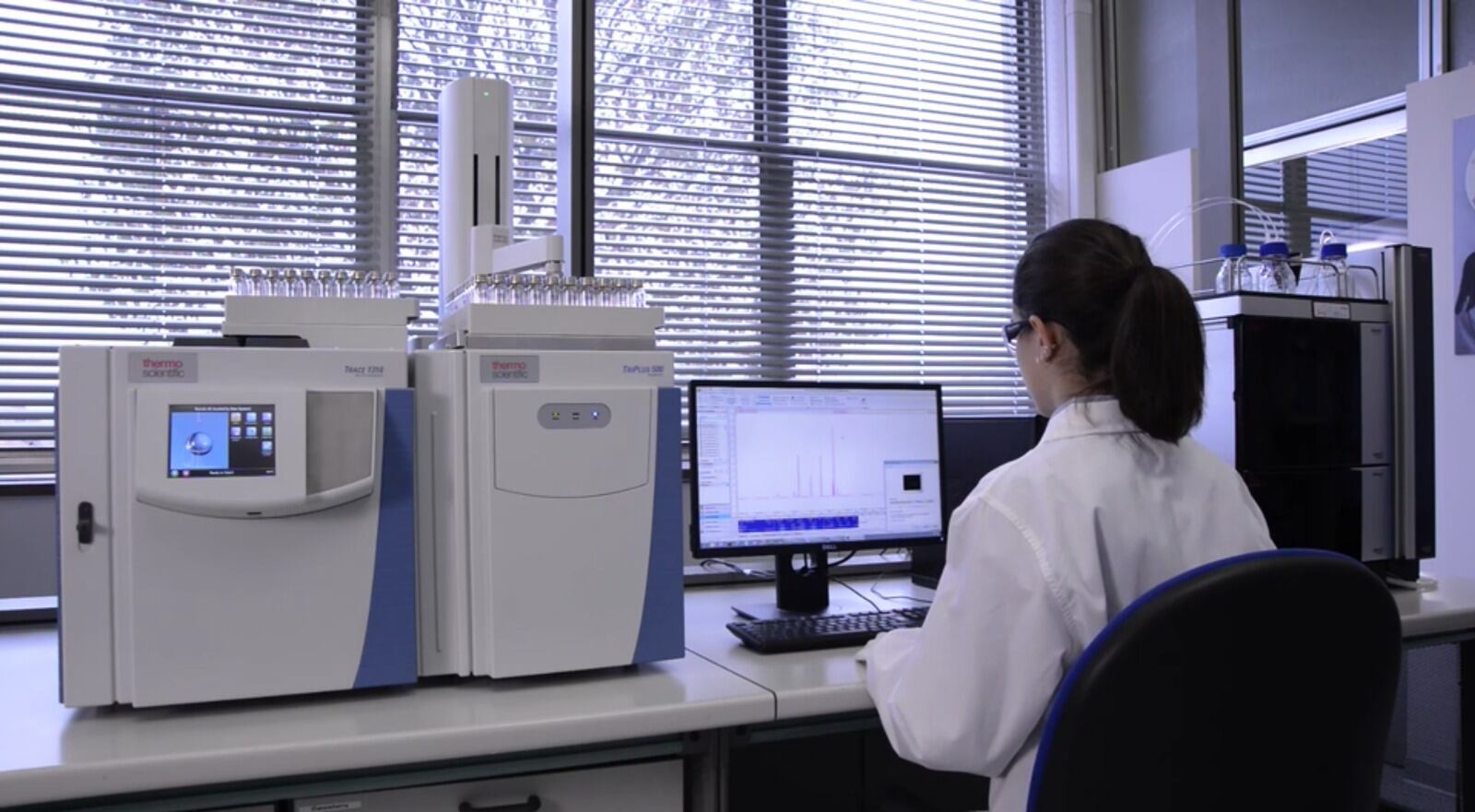
Smith added that over the next 18 to 24 months, food safety concerns surrounding pesticides are expected to take centre stage as a result of these initiatives by China, as well as its updates to the National Food Safety Standard in early 2020.
“Transparency and traceability are also key trends in food safety as Asia’s consumers take interest in issues about the environment, food authenticity and integrity. Food packaging and storage will also be of concern as consumers and businesses look towards plastic alternatives that are ‘food-friendly’,” he added.


